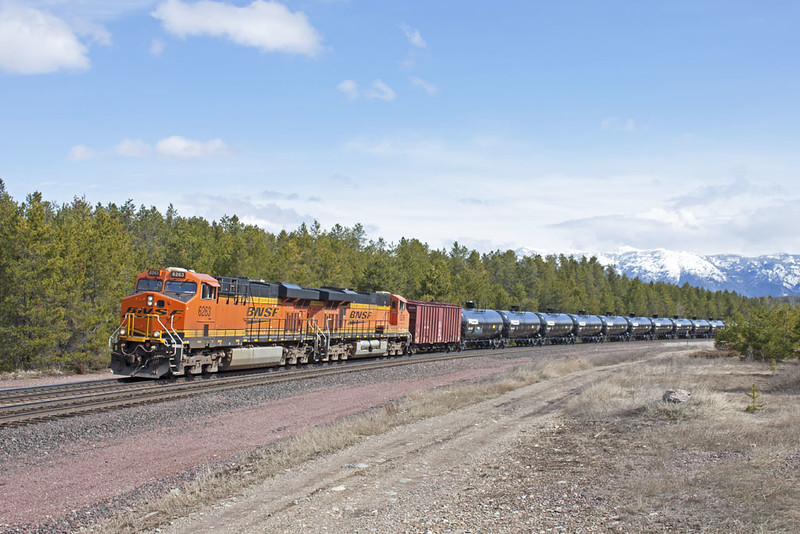By Railfan & Railroad Staff
WASHINGTON — Oil trains might be getting a little longer after the National Transportation Safety Board recommended that all hazardous material trains have at least five buffer cars between the locomotive and cars. The recommendation came as the result of two ongoing investigations into fiery derailments in Texas and Kentucky.
“This is not the first time NTSB has issued recommendations regarding the use of buffer cars to reduce the risks of hazardous materials release to train crews,” said Robert Hall, NTSB Director of Railroad, Pipeline and Hazardous Materials. “We believe that it is imperative that these recommendations be implemented to prevent the potential for a catastrophic event.”
In one of the derailments being investigated, a CSX train derailed along a river at Draffin, Ky., on Feb. 13, 2020. The locomotives and tank cars were separated by one buffer car and caught fire when the train derailed. The crew was briefly trapped. The NTSB argues that had there been more buffer cars, the tank cars might not have caught fire or at the very least, there might have been more room between the fire and the crew.
Unions were quick to endorse the idea, saying it would result in safer working conditions for its members.
“Since engine and train crews occupy the cab of that potential ignition source, there should be as much distance away from the fuel source as possible,” wrote BLET National President Dennis R. Pierce in a letter to the FRA dated April 28, 2015. “Five cars may be insufficient, but one car is obviously not enough.”


